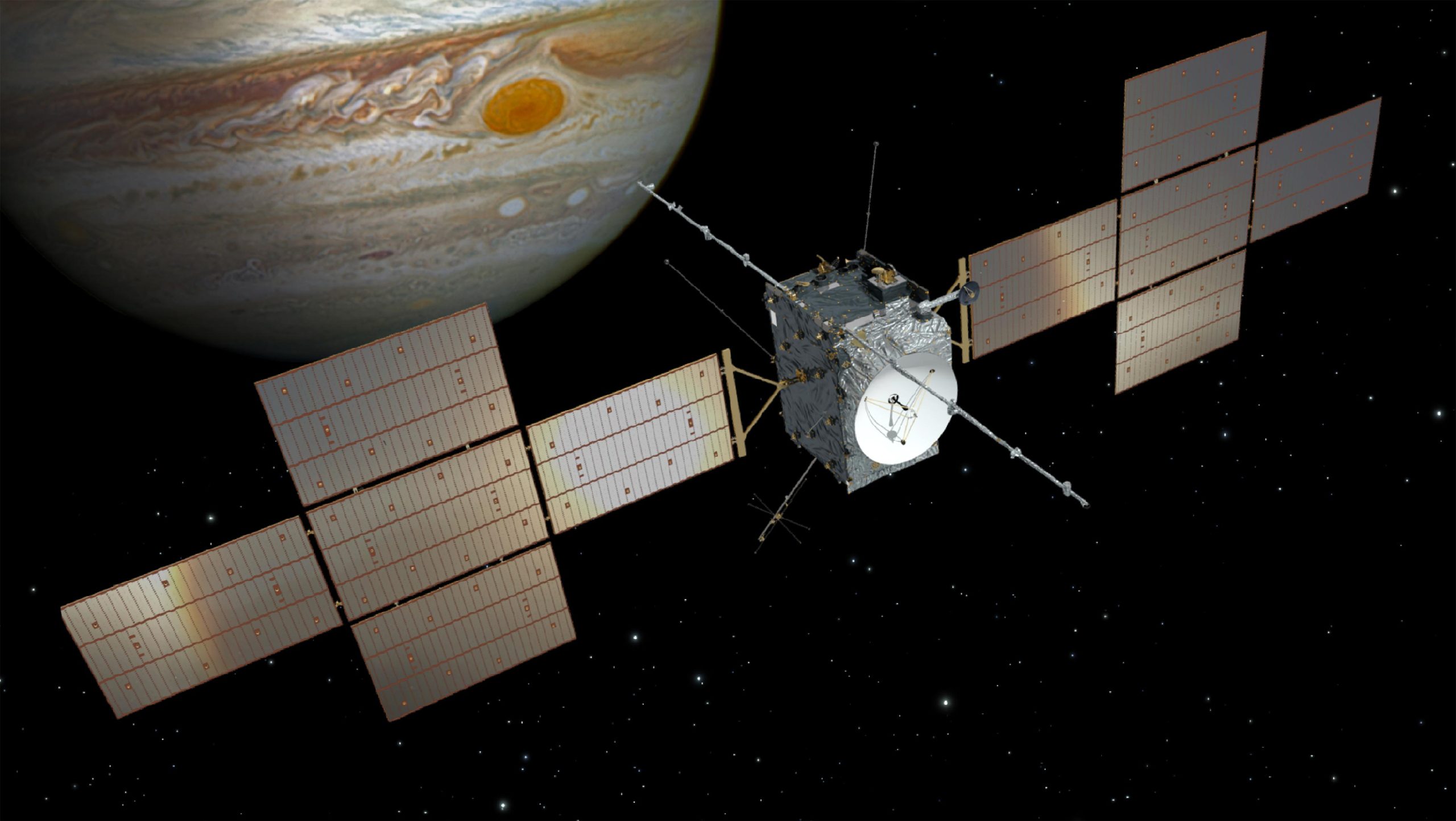JANUS, a camera on the images from its monitoring cameras and we’ve seen images from its navigation camera. Now, the The main aim of JANUS’s observations during the lunar-Earth flyby was to evaluate how well the instrument is performing, not to make scientific measurements. For this reason, JANUS took images with various camera settings and time intervals – a bit like if you’re going out to test a DSLR camera for the first time. In some cases, researchers intentionally ‘blurred’ the images so that they can test out resolution recovery algorithms. In other cases, they partially saturated the image to study the effects induced on the unsaturated areas. The name JANUS comes from the Latin phrase ‘Jovis, Amorum ac Natorum Undique Scrutator’, or roughly ‘Scrutiniser of Jupiter, and all his loves and descendants’. Jupiter’s four largest moons – the main focus of Juice’s mission – are named after protagonists in the ‘love affairs’ of Zeus, the equivalent of Jupiter in Greek mythology. JANUS will transform our knowledge of Jupiter’s icy moons, by capturing them with a resolution and coverage 50 times greater than previous cameras sent to the Jovian system. The camera is equipped with an onboard computer that manages all instrument functions, processes commands, and sends data back to Earth. In imaging our own Moon, with no atmosphere, JANUS could test out how it will function at Ganymede, Callisto and
Testing and Calibration of JANUS
Mythological Significance and Mission Goals


Technical Aspects and Collaboration
Note: These images are preliminary and have not been processed to use for science
JANUS was developed by an industrial consortium led by Leonardo SpA, under the supervision of the Italian Space Agency (ASI) and in collaboration with the Italian National Institute for Astrophysics (INAF), which is responsible for instrument science, the German Aerospace Center (DLR), CSIC-IAA in Granada (Spain) and CEI-Open University in Milton Keynes (UK).


















/https://tf-cmsv2-smithsonianmag-media.s3.amazonaws.com/filer_public/d1/82/d18228f6-d319-4525-bb18-78b829f0791f/mammalevolution_web.jpg)






Discussion about this post